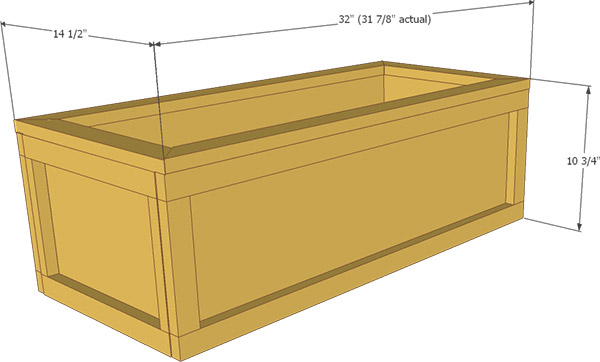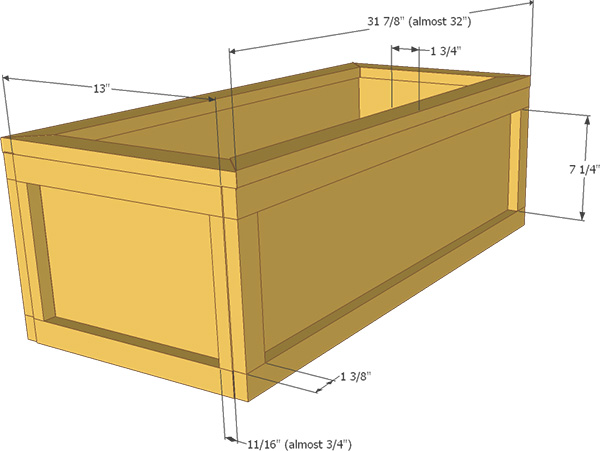If you’ve already followed the Flower Box Part I article, you have all of your flower box and trim pieces cut to the appropriate width and length and are ready to begin assembly.
It’s usually preferable to make all of your cuts first, as it allows you to get into a rhythm not only on the cutting but on the assembly as well.
Step 1 – Countersinks & Pilot Holes
If you only have one drill, it’s typically easier to drill all your countersinks and pilot holes in one step, then insert your fasteners (screws) in another step.
If you have a counter bit, great! Tighten it up in your drill. If not, you’ll have to do this in two steps, one with your counter sink and the other with your pilot bit.
- Drill a total of 13 counterbit holes in each of your 30 1/4″ x 10″ front/back pieces that we cut in part I.
- Drill a total of 3 counterbit holes in each of your 11 1/2″ x 10″ side pieces that we cut in part I.
See the diagram below.
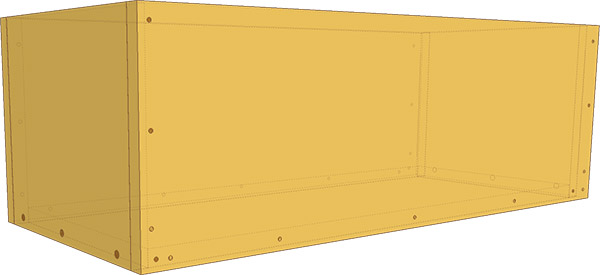
The side of the board that you drill the counterbit holes in will be the visible side (the screws will be covered up with trim). So make sure you choose the side that is most aesthetically pleasing for each board.
Step 2 – Assemble the box (glue & screw)
Now that you have everything cut and predrilled, simply assemble all three boxes with your 1 1/2″ screws!
The best way to do this is to piece together and glue all sides of the box. Clamp the box in place with bar clamps and start screwing it together.
Step 3 – Assemble the face frames (trim)
The technique I recommend to assemble the face frames is called pocket hole joinery. This technique provides adequate strength for smaller projects while hiding the fasteners “behind” the visible face of the wood. I provide more detail here on pocket hole joinery.
Now that you have all of your trim cut, this step is relatively easy. See the diagram below for pocket hole placement and trim assembly.
- Use your pocket hole jig to create 4 pocket holes (2 on each edge) in each of your 7 1/4″ x 1 3/8″ trim pieces.
- Then create 2 pocket holes (one on each edge) in each of your 7 1/4″ x 11/16″ trim pieces.
- Clamp the trim frames together as shown below with your bar clamps.
- Insert your pocket 1 1/4″ pocket hole screws and drive them in with your cordless drill.
- Important: Cedar is a soft wood. It’s easy for your pocket hole screws to blow out through the face of your trim. Make sure your power drill is set on one of the lower torque settings. This is also the reason I chose 1 1/4″pocket screws over 1 1/2″ ones.
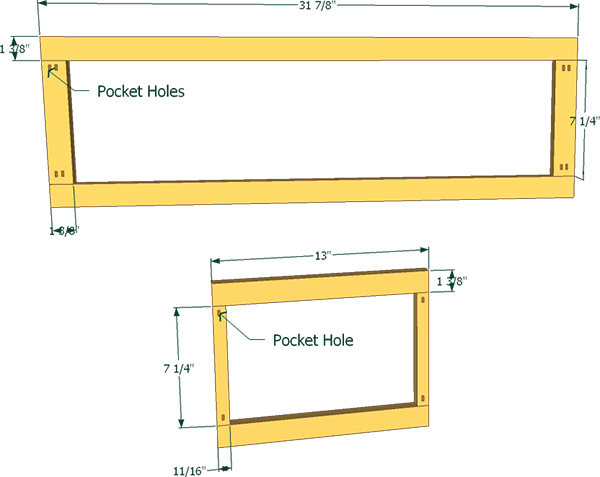
Step 4 – Attach the trim to the box
There are a number of ways to attach trim to a box. Cabinet makers often prefer to use biscuit joiner, which involves creating a few small football-shaped “grooves” in the back of the trim and the box itself. Then, gluing a biscuit into both grooves.
While this technique is clean and precise, it requires the use of a biscuit joiner, which is not part of most people’s toolset.
The easier approach is to simply glue the frame on the box, then fasten it with finish nails. The finish nail holes will hardly be visible once the project is complete. Especially if you spend a few extra minutes filling the holes with wood putty before you stain the box.
Step 5 – Assemble the top trim (cap)
The next step is to assemble the top trim using the same pocket hole method as with the side trim.
The difference being that the edges are mitered. This presents two minor challenges:
- You have to be a little more precise with the placement of your pocket holes.
- It’s more difficult to bar clamp the pieces together, as the mitered edges will tend to “slide” apart.
The first one is easily solved by simply placing the mitered edge flat on your pocket hole jig when drilling the holes. See the image below:
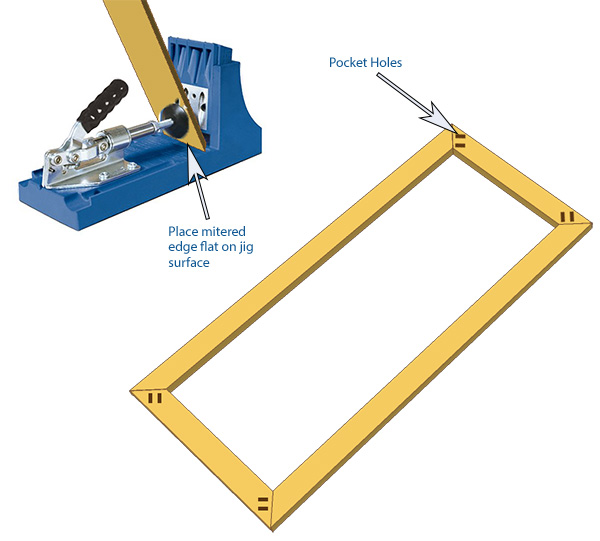
The clamping problem is solved with the use of clamping squares (as mentioned in the Tools section of part one).
By clamping a square at each corner as you insert the pocket hole screws, it’s easier to ensure that the two mitered corners stay together while fastening.
Step 6 – Attach the top trim
We’ll use the same method that we used to attach the side trim. That is:
- Glue
- Clamp
- Finish nail
Step 7 – Stain the finished box
For your stain choice, you’ll want a penetrating oil based stain. It will peel less over time. Penetrating stains get deep into the wood instead of resting on the surface.
That being said, your method of application can play a factor in how deep the stain penetrates.
Spraying stain may be easy, but it doesn’t really allow the stain to seep deep in the wood. A brush is typically the best way to apply penetrating stain.
Step 8 – Enjoy!
Give your new flower boxes a few hours to dry after staining, then load them up with potting soil and start planting!
P.S. it is up to you whether or not you choose to put gravel at the bottom of your flower boxes. Some say that it overcrowds the plants, while others say that the drainage is necessary.
The good news is that you now have three boxes to experiment with!

